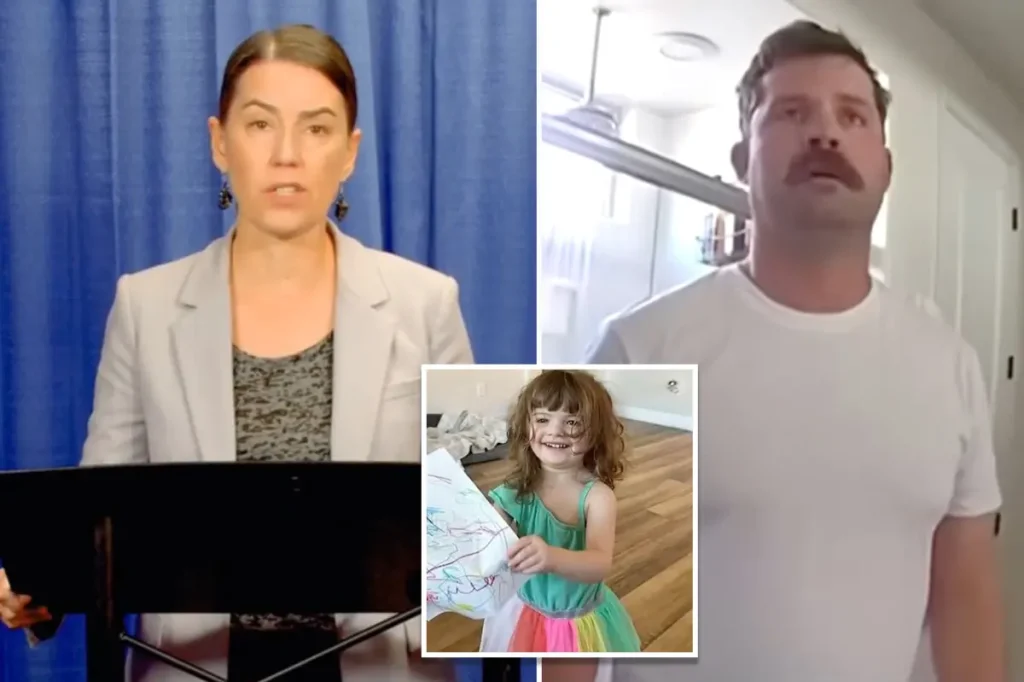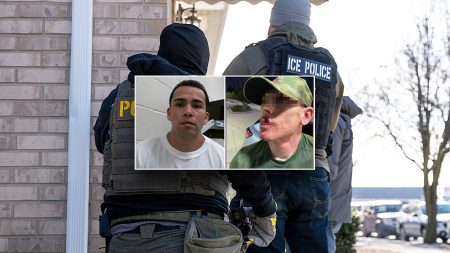Arizona Dad’s Tragic End Leaves a Shattered Family and a Plea for Healing
In a heart-wrenching conclusion to a case that shocked Arizona, Christopher Scholtes, the 38-year-old father convicted of leaving his 2-year-old daughter Parker to die in a 109-degree car, took his own life rather than face justice. Pima County Attorney Laura Conover delivered a powerful statement following the news of Scholtes’ suicide, focusing not on the father’s final act of evasion but on the surviving family members left to pick up the pieces. “This little girl’s voice was nearly silenced because justice was not served appropriately this morning,” Conover stated, “but it has not, and will not be silenced.” Her words served as both an acknowledgment of the justice denied and a promise that Parker’s memory would endure despite her father’s final attempt to escape accountability for his actions. Scholtes was found dead in a Phoenix home on Wednesday morning, just hours before he was scheduled to begin what would likely have been a 20 to 30-year prison sentence after pleading guilty to second-degree murder in October.
The circumstances surrounding Parker’s death in July 2024 were particularly disturbing, revealing a pattern of neglect that ultimately proved fatal. While his toddler daughter remained locked in a sweltering vehicle in his driveway, Scholtes spent more than three hours inside his home watching pornography, playing video games, and drinking beer. This horrifying incident wasn’t an isolated moment of negligence but rather the deadly culmination of what appears to have been a long-standing pattern of abusive behavior. Text messages revealed during the investigation showed that even his wife had repeatedly warned him about leaving their children in the car, with one heartbreaking message sent after Parker’s death reading: “I told you to stop leaving them in the car. How many times have I told you?” The tragic irony is that a simple act of bringing his child inside might have prevented this senseless death, but instead, his self-centered choices led to an innocent life being extinguished in the most painful way.
What makes this case even more disturbing is the evidence suggesting that Scholtes’ neglect extended far beyond the incident that claimed Parker’s life. Just days before his suicide, his 17-year-old daughter from a previous marriage filed a lawsuit alleging years of “repeated physical, emotional, and psychological abuse” within their home. She specifically mentioned being locked in cars as a child more than a decade ago, suggesting a frightening pattern that spanned years and affected multiple children. Her younger siblings corroborated these claims, telling investigators that being left locked in vehicles was a regular occurrence in their lives. This context transforms our understanding of Parker’s death from a single terrible mistake into something far more sinister: the predictable outcome of years of dangerous behavior that had somehow never before reached its deadly potential. That Parker was the one to ultimately pay the price for her father’s repeated negligence adds another layer of tragedy to an already devastating story.
In the wake of Scholtes’ suicide, Conover’s most heartfelt words were directed not at the absent father but at his surviving children, who now face the daunting task of healing from multiple traumas—the loss of their sister, the criminal actions of their father, and now his suicide rather than facing justice. “May you be surrounded by love. May you receive all of the support you deserve and need, and then some,” she said, addressing the children directly. “May you know and believe that you can survive and thrive. I have proof.” These words acknowledge the difficult journey ahead for these young people while offering a message of hope that recovery is possible despite the extraordinary circumstances they’ve endured. Conover went on to explain that her office houses counselors specifically trained to help children navigate exactly this kind of trauma, extending an offer of support that recognized the ongoing nature of their healing process.
The prosecutor’s approach demonstrates a deep understanding that when criminal cases involve families, the aftermath extends far beyond the courtroom. Rather than focusing solely on the punishment that Scholtes avoided, she emphasized the resources available to help his children rebuild their lives. “They’ve watched people like you survive and thrive, and are now living here in our community as successful and happy adults,” Conover assured the children, adding, “This is what we wish for you and know you can achieve.” Her words acknowledged the complexity of emotions the children might be experiencing—grief for their sister, confusion and anger toward their father, and uncertainty about their own futures. By speaking directly to them in this public forum, she recognized their status not just as witnesses or family members of the accused, but as victims themselves who deserve support and care from the broader community.
Perhaps the most poignant moment in Conover’s statement came when she offered a spiritual connection between the surviving children and their lost sister: “And when you look back on this time as the years follow, may you not feel tied down by what happened here, but rather lifted up by your baby sister’s wings from up above.” This beautiful sentiment reframes Parker’s memory not as a source of ongoing pain but as a potential source of strength and inspiration for her siblings. While nothing can undo the tragedy that unfolded—a preventable death, a father’s evasion of justice, and the lasting trauma inflicted on the surviving family members—Conover’s words offer a path forward. They suggest that healing is possible, that resources exist to help these children process their experiences, and that Parker’s memory can somehow transcend the horrific circumstances of her death to become something that uplifts rather than burdens those she left behind. In a case defined by one man’s repeated failures to protect his children, Conover’s response modeled what real care for these vulnerable young people looks like.










